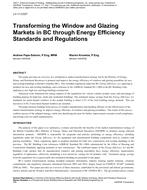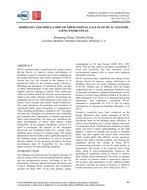In a subcooler/superheater (suction line) heat exchanger, the leaving refrigerant vapor from the evaporator can be used to subcool the liquidrefrigerant leaving the condenser. Applying the suction line heat exchangers have not been advised in the refrigeration systems running with earlierrefrigerants such as R22. Even though the refrigerants have been modified substantially to newer generations within recent decades, manyHVAC&R manufacturers still avoid using suction line heat exchanger. In this study the thermodynamic properties of a refrigeration cyclewith Refrigerant R134a is investigated and the benefits and constraints of using the heat exchanger in the vapor compression refrigeration cycle hasbeen revisited. It is found that using suction line heat exchangers increases the cooling capacity and efficiency of the device and at the same timereduces the possibility of liquid refrigerant flow back to the compressor. It is also found that the high discharge temperature, which was the mainlimitation of using suction line heat exchanger in R22 systems, is less critical in R134a systems, and both the cooling capacity and the coefficient ofperformance of the refrigeration system improve as the saturated condensing temperature increases. This is indeed a satisfyin g attribute in hotclimates. For R134a, the COP and cooling capacity of the refrigeration cycle increases from 2% and 5.5% at 104 F (40 C) condensingtemperature to 5% and 9.2% at 140 F (60 C) condensing temperature. Furthermore, it is found that the pressure drop in the heat exchanger hasunpleasant effects on the performance of the suction line heat exchanger. In extreme cases, this can negate the performance of the suction line heatexchanger. Hence a detailed study must be done to analyze the combined effect and if necessary redesign the heat exchanger. This study highlyrecommends the use of suction line in newly designed equipment using refrigerant R134a. In retrofit applications where R134a replaces R22,reduced capacity as a result of the retrofitting can be partially compensated by the addition of a suction line heat exchanger.
Citation: First International Conference on Energy and Indoor Environment for Hot Climates, Doha, Qatar, February 2014
Product Details
- Published:
- 2014
- Number of Pages:
- 8
- File Size:
- 1 file , 1.9 MB
- Product Code(s):
- D-2014FICEConf-3-3


